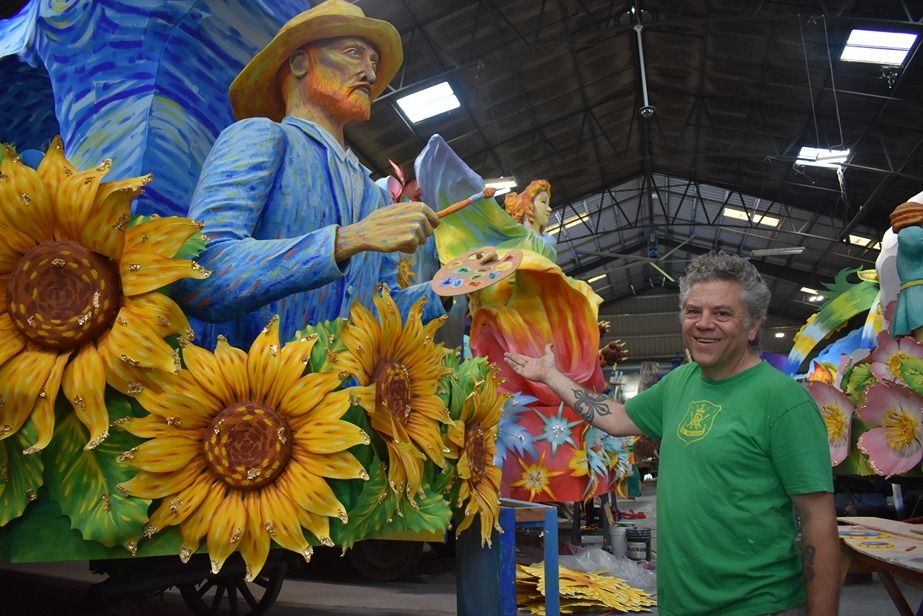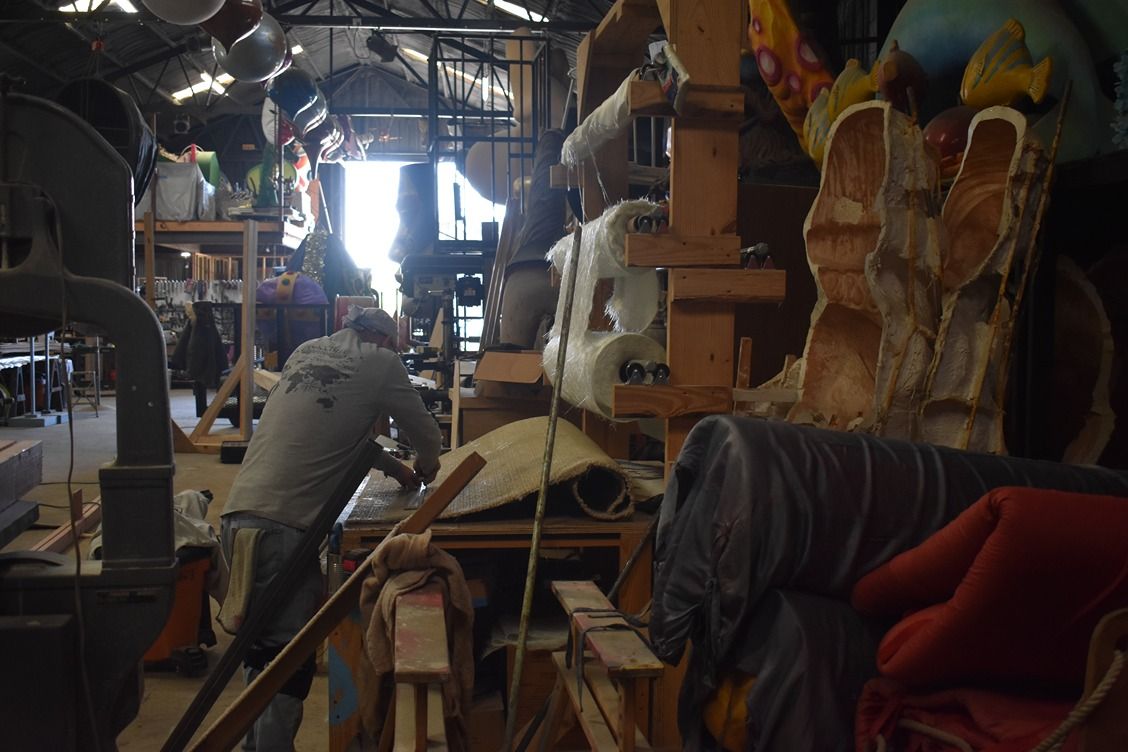How Teamwork Makes the Dream Work
We all love Mardi Gras parades, but who's behind the rolling masterpieces? Richard Valadie, Caroline Thomas, Jonathan Bertucelli, and Benny Anderson are New Orleans float artists preserving the traditions of Carnival.
Richard Valadie started as a painter 25 years ago and, in 2011, became owner and president of Royal Artists. Royal Artists was founded in 1975 by Herb Jenke with the mission of building old line parades. The group creates floats for krewes including Rex, Proteus, Babylon, Krewe D'etat, and others in Mobile, Alabama.
He said all their floats designs are hand-drawn and saved. There is even an archive in the Tulane Library with drawings dating back to the 1800s. "Floats are planned years in advance, for the process begins as an idea, then a design, an outline, and a visual interpretation of it which are all hand drawings," he noted.

Rex and Proteus do non-contemporary themes usually inspired by the 1800s when they were founded. He said this year, Rex's theme is "La Belle Époque," the Golden Age of Parisian art in the 19th-century. "I feel like what we try to do is keep these parades really traditional and make it not contemporary, and that's part of their character," Valadie said.
Caroline Thomas is an art director, painter, and designer for Proteus and Rex at Royal Artists. She became head designer in 2011. A Louisiana native, Mardi Gras has always been in her life, but after completing her degree in fine arts, she became interested in Carnival art.
Rex's theme, "La Belle Époque," holds dear to Thomas' heart because it was an era where women held autonomy in art spaces. Historical krewes' themes require extensive research, so she consumes podcasts, mythology books, and old float mock-ups to design. Thomas is inspired by Art Nouveau artist Alphonse Mucha and has even replicated his drawings in this year's theme.
She proposes a theme and divides it across each float, as, she said, the concept must stretch across the line-up. Each float has different shapes and each concept should naturally match a float's silhouette. Once each float is assigned, she awaits approval for the hand-illustrated sketches. The floats are pure papier-mâché, which minimizes waste, looks custom made, and respects tradition. All early Mardi Gras parades consisted of papier-mâché props imported from Paris. "I think it looks handmade. It looks custom made for this parade," Thomas said.

She faces challenges during the design process. She must consider how a float will look on the street while still confined to the warehouse, as well as ways to engage an all-age audience. "It is a very fulfilling job once you see it out on the street and see how excited people get. Most people work in Mardi Gras because they see it as a public good. It's a core part of the city's identity," Thomas proffered.
Jonathan Bertuccelli is from Viareggio, a coastal Italian town an hour from Florence. Viareggio celebrates an enormous Carnival with what Jonathan said are the biggest and most elaborate floats in the world. His father, grandfather, and great uncle built Carnival there. Later, his father Raul moved to America and worked closely with "Mr. Mardi Gras" Blaine Kern, who consistently imported props from Italy in the '50s and '60s. Eventually, Raul started Studio 3, a team of Carnival artisans.
Bertuccelli took over his family's Studio 3 business 25 years ago and commissions Carnival pieces, big heads, mini-floats, masks, and sets. Bertuccelli uses Old World techniques, including a particular process he said his father brought over from Italy. This process uses clay sculpting, plaster mold casts, and papier-mâché to execute a polished, detailed look. Machines offer efficiency but lack the "soul" of handcrafted work, he noted. Preserving Old World traditions and techniques is his mission as an independent business owner. "He does it the old school Italian way, which is very fascinating," Caroline Thomas said.
Bertuccelli's special "big walking heads" began in Italy and were imported to New Orleans in the '80s. His heads symbolize the "mystic element of anonymity" and the essence of Carnival. He said they represent hiding one's identity before Lent. The exaggeration is what makes it Carnival, because Carnival is meant as an expressionistic interpretation of life.
Benny Anderson is an emerging talent at Royal Artists who specializes in sculpting. A young innovator at just 25, he is a youthful energy who respects tradition, he said. This year, he's sculpted for Chaos, Proteus, and Rex. Anderson has transitioned from purely sculpting to painting, which feels similar due to the contouring element. "Painting feels like carving out shapes for sculpting to me," Anderson said.
Each parade has signature floats which stay the same every year, as well as floats that are dismantled and completely whited out. Nearly all floats are inanimate except for the Butterfly King, which was made by Bertuccelli. The chassis of some floats are re-used over and over, some dating back to a hundred years ago.
Anderson enjoys the various techniques for manipulating paper, especially in making the famous giant flowers, where he can hide his own artful details. Thomas mentioned the flowers are reused and reimaged each year to reduce waste. "If I sculpt a lot of good details in the work, then the painter has an easier time of just tracing all the shapes I've made and then adding the shadows in naturally," Anderson described.
"And then we tear it all down and do it again, which is kind of mind boggling, you know, how much it means to us as we're working on it, to know that it's just like—it's ephemeral," Valadie mused.

